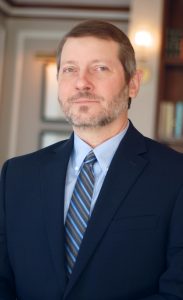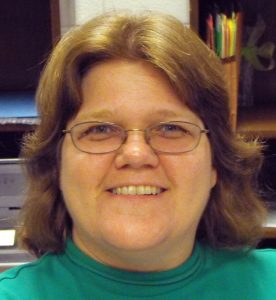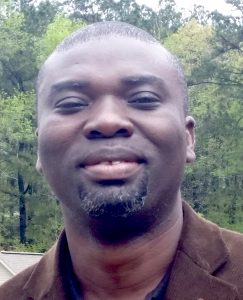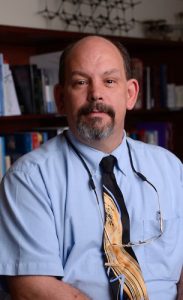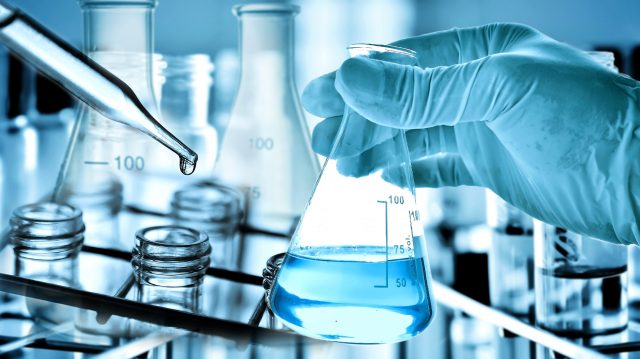
Chemistry professors and lab coordinators at the University of Mississippi worked with the university’s facilities management and facilities procurement teams to create individual cubicles, made using nonporous barriers, in chemistry labs so students could safely conduct experiments and get in-person instruction during the fall semester.
Chemistry professors could lecture about displacement reactions in their sleep, but one displacement problem had them stumped as they planned for fall semester. How could some 1,000 University of Mississippi students, many suddenly uprooted last spring, attend lab sessions during a global pandemic?
When classes started in August, Mississippi’s Department of Health was reporting hundreds of new COVID-19 cases a day.
In response to public health and UM guidelines, Gregory Tschumper, chair and professor of chemistry and biochemistry, and the lab coordinators worked with the university’s facilities management and facilities procurement teams to come up with a proposal for safely distancing students.
They decided to create individual cubicles, made using nonporous barriers, in the labs. The department invested in $20,000 of Plexiglas, for which the facilities team coordinated the ordering and installation.
Additional safety measures included students wearing masks and the sanitizing of each station before and after students worked at it. Teaching staff assistants kept common work areas sanitized.
“I hope that our students and other members of the UM family recognize the Herculean effort that has been put forth by chemistry faculty like Dr. John Wiginton, Dr. Safo Aboaku, Dr. Kerri Scott and Dr. Randy Wadkins in our teaching labs this semester,” Tschumper said.
“With all of the safety restrictions imposed by the pandemic, they have gone to extraordinary lengths to convert our laboratory courses to a hybrid format that still regularly includes in-person instruction. It is a privilege to work with such a dedicated group of faculty and teaching assistants.”
To reduce the number of students working in the labs during a given session, the department split the 24-person sessions in half – into an A group and a B group – and rotated the groups so that 12 students at a time could attend face-to-face lab sessions. Those not in the lab watched video experiments produced by graduate students or worked remotely on labs that were available on an online platform.
The new arrangement brought some unanticipated benefits.
“Initially, I had to be sold on the idea of hybrid labs, said Randy Wadkins, professor of chemistry and biochemistry, “But I soon realized that with smaller numbers I’m getting to know my students better than before.”
Students, too, realized advantages of the rotation concept.
“Rotations allow each student at least two times to perform an experiment each session because there are fewer students,” said Juaneisha Finnie Kennedy, a member of Wadkins’ 400-level biochemistry class from Booneville.
Smaller classes also give professors and instructors more one-on-one time for teaching.
“Faculty and teaching assistants usually can spend seven minutes with a student, but with only 12 per class, we could actually give them twice that amount of time,” said Kerri Scott, instructional professor and associate coordinator of the forensic chemistry program. “The noise level is a lot lower, so it’s easier to have a conversation.”
Having 12 students instead of 24 makes lab sessions more relaxed, said Safo Aboaku, an instructional assistant professor of chemistry.
“When you spread students out, the station next to them is empty, so they get a lot more elbow room,” he said. “It’s more comfortable if you have space to maneuver.”
As for increased safety measures such as masking, these students seem to take it in stride.
“Many of us are used to taking extensive measures for safety in labs due to the types of chemicals we can work with, so the additional safety procedures for keeping us safe don’t cause any hindrance to our experience in the labs,” said Guinn Gruber, of Denton, Texas, a student in Scott’s 300-level Quantitative Analysis labs.
“I am certainly grateful that Dr. Scott is taking every precaution to keep a rather vital part of our learning in-person, while also making sure our safety is top priority.”
When safety concerns kept students off-campus campus over the summer, John Wiginton, instructional associate professor and coordinator of undergraduate laboratories, found a feasible solution for the summer students in 100-level General Chemistry labs. These courses, typically taken by first-year students, have the largest enrollment, by far, of any chemistry course.
He partnered with a consortium of lab supply companies to create at-home kits that were custom assembled for Ole Miss general chemistry lab classes and paid for by the department. The kits – beakers, alcohol burners and other equipment, except chemicals – were delivered to the homes of 150 students at no cost to them.
By fall, they were able to take the next level of chemistry, having done at least rudimentary lab work.
“I am very proud of my colleagues in this department, who did the best possible job under really difficult circumstances,” Wadkins said.
